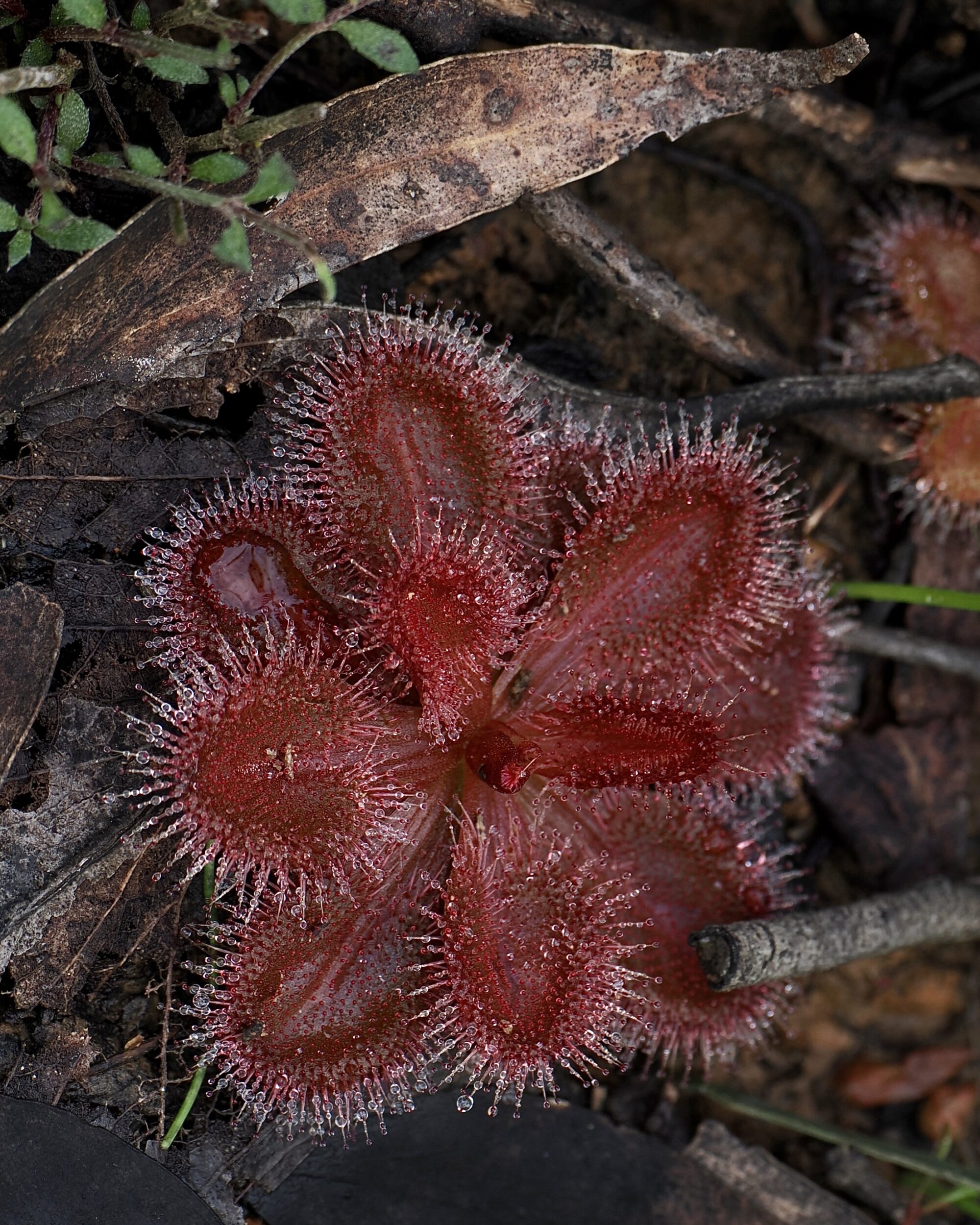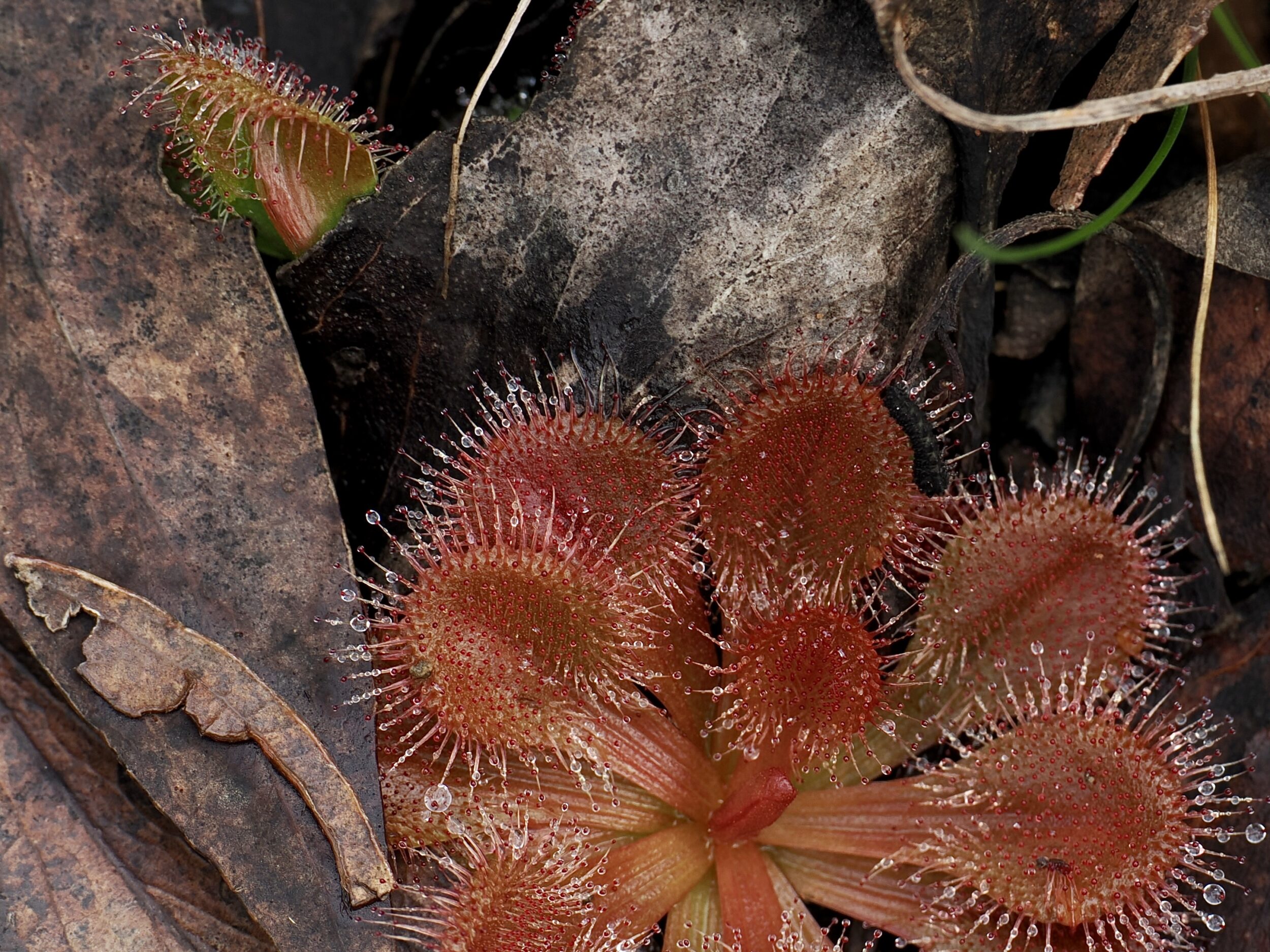This post’s images are cropped versions of the very same photos that appeared in the immediately preceding post.
The closer the view, the more readily-evident is the fact that these plants are predators.
Above and below, you have a good view of their “dew” (which is not dew) and of some of the lured victims in the “killing field”, in various stages of being “dissolved”/ “absorbed”/ devoured.

Why is Australia – southwest WA, most especially – the global hotspot for carnivorous plants, particularly Drosera/ “sundews”?
The answer lies in the soil, as “Arthur Fallowfield” would say, in a dense Dorset accent.
(“Arthur Fallowfield” was a character created and voiced by Kenneth Williams. “Arthur” was a parody of Ralph Wrightman, one of radio’s first farming/gardening “gurus”)
By English standards, some of Dorset’s soils are rather poor.
By Australian standards, some of those “poorer, sandier Dorset soils” would be relatively good.
”Good”, nutrient-rich soils are rich in organic matter and minerals/trace elements.
They are also “structured” and “friable”.
Sand is just one of their many components.
A deal of Australia’s topsoil is little more than sand; it contains precious little organic matter, it lacks trace elements, has bugger all “structure”, and has very little ability to retain moisture.
Simply put, this harsh reality explains why so many of Australia’s endemic plants are carnivorous – insects and arachnids are a much richer source of nutrients and water than are the soils in which these plants sit..
The same existential “problem” also explains why Australia (again, most especially southwest WA) is the world capital of “sexual deception”…by plants, at least.
Most flowering plants “reward” their pollinators.
To produce that “reward”/“lure”, a flowering plant has to expend a lot of energy.
In a nutrient-poor environment it makes better sense for a flowering plant to delude its pollinator; why waste energy on feeding it with nectar, when you could simply fool into thinking that it is mating with you?
Unsurprisingly, in the cold midwinter of 2023 we saw absolutely no flowers on any of the sundews in Deep Creek National Park.
(“National Park” is now the “correct” title, but many people still know it as “Deep Creek Conservation Park”)
Came the Spring, however, many of them would have had beautiful flowers.
Drosera species position their flowers well away from the sundews’ “murderous”/“digestive” zones; sundews’ pollinators are not their prey.
Click here to see a lovely WA example.
